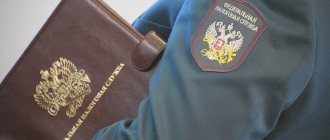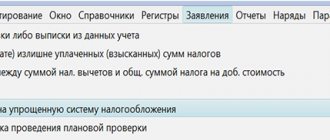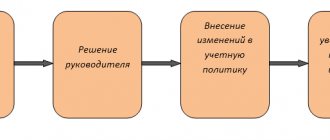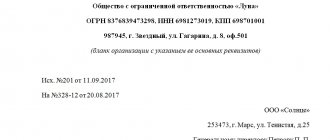Home — News
- Expansion of regional rights
- Legislator's instructions
- Tax rate
Changes in ch. 26.5 “Patent taxation system” of the Tax Code of the Russian Federation, which came into force on January 1, 2015, was introduced by three Federal laws:
- dated July 21, 2014 N 244-FZ “On amendments to Articles 346.43 and 346.45 of Part Two of the Tax Code of the Russian Federation”;
- dated November 29, 2014 N 379-FZ “On amendments to parts one and two of the Tax Code of the Russian Federation in connection with the adoption of the Federal Law “On the development of the Crimean Federal District and the free economic zone in the territories of the Republic of Crimea and the federal city of Sevastopol”;
- dated December 29, 2014 N 477-FZ “On Amendments to Part Two of the Tax Code of the Russian Federation.”
Judging by the name of the first of these Laws, it amended two articles, 346.43 and 346.45, of the Tax Code of the Russian Federation, establishing the general provisions of the chapter in question, as well as the procedure and conditions for the beginning and termination of the application of the patent taxation system.
The other two Laws introduced amendments to Art. 346.50 of the Tax Code of the Russian Federation, which determines the tax rate when using PSN.
Law No. 477-FZ, in addition, introduced an amendment to Art. 346.51 of the Tax Code of the Russian Federation, which establishes the procedure for calculating tax, as well as the procedure and deadlines for paying tax.
As you can see, innovations affected four of the eleven articles of Chapter. 26.5 Tax Code of the Russian Federation. Most of the changes represent new editions of previously existing provisions.
Expansion of regional rights
Regional legislators, by virtue of clause 7 of Art. 346.43 of the Tax Code of the Russian Federation is given the right to establish, by the laws of the constituent entities of the Russian Federation, the amount of annual income that an individual entrepreneur can potentially receive by type of business activity in respect of which the patent taxation system is applied. The amount of such income in the original version of this paragraph was determined both from below - 100,000 rubles, and from above - 1,000,000 rubles.
From January 1 of this year, this norm does not limit the constituent entities of the Russian Federation in establishing the minimum amount of potential annual income (clause “a”, paragraph 1, article 1 of Law No. 244-FZ). Theoretically, it can be reduced to zero. It is possible that this innovation will reduce the patent burden for some individual entrepreneurs.
The minimum amount of annual income potentially received by an individual entrepreneur was mentioned in paragraph 9 of Art. 346.43 of the Tax Code of the Russian Federation, which determines its annual indexation by the deflator coefficient established for the corresponding calendar year. In the new version of this paragraph, the specified indexation is provided only for the maximum amount of potentially obtainable annual income.
Let us recall that by Order of the Ministry of Economic Development of Russia dated October 29, 2014 N 685, the deflator coefficient for the patent taxation system for 2015 was set at 1.147.
Thus, the maximum amount of annual income potentially received by an individual entrepreneur in 2015 will be 1,147,000 rubles. (RUB 1,000,000 x 1,147). And it is within the range from 0 to this value that the laws of a constituent entity of the Russian Federation can establish the amount of annual income that an individual entrepreneur can potentially receive by type of business activity.
For regional representative authorities, the introduced paragraph. 1.1 clause 8 art. 346.43 of the Tax Code of the Russian Federation (clause “b” of paragraph 1 of Article 1 of Law No. 244-FZ) grants the right to establish the amount of annual income that an individual entrepreneur can potentially receive by type of activity in respect of which the PSN is applied, differentiated in part of the territory of the constituent entity of the Russian Federation by territories of patent validity by municipalities (groups of municipalities).
This innovation can be applied to all patent types of activities, except for the types of business activities specified in paragraphs. 10, 11, 32, 33 and 46 (in the part relating to delivery and peddling retail trade) clause 2 of Art. 346.43 of the Tax Code of the Russian Federation, namely in relation to:
- provision of services for the transportation of passengers and (or) cargo by road and water transport;
- retail trade through non-stationary retail chain facilities (distribution and delivery).
The exclusion of these types of activities is quite logical, because it would not be so correct to oblige an entrepreneur engaged in, for example, delivery trade, to obtain patents for each municipality in which he sells goods.
The introduction of this norm entailed the need to clarify paragraphs. 3 clause 8 art. 346.43 of the Tax Code of the Russian Federation, which allows regions to establish the amount of annual income potentially received by an individual entrepreneur by type of activity, depending on their individual indicators. Previously, these indicators included:
- average number of employees;
- number of vehicles;
- the number of separate objects (areas) in relation to the types of business activities specified in paragraphs. 19, 45 - 47 p. 2 art. 346.43 Tax Code of the Russian Federation.
Since the beginning of this year, the territory of validity of patents has been added to them, determined in accordance with paragraphs. 1.1 clause 8 art. 346.43 Tax Code of the Russian Federation. In the case of vehicles, when establishing the amount of potential annual income, in addition to their number, their carrying capacity or the number of seats may be taken into account.
As we can see, since 2015, regions can establish different amounts of potential annual income for the same types of activities in the territory of different municipalities.
The activities of an individual entrepreneur in several municipalities of a constituent entity of the Russian Federation, in which different amounts of potential annual income are established, are possible only if he obtains a patent for each municipal entity. And this, in turn, led to the need for new editions of paragraph. 4 and 5 paragraph 1 art. 346.45 Tax Code of the Russian Federation.
Previously valid versions of these norms state that:
- the patent is valid in the territory of the subject of the Russian Federation that is indicated in it,
- and an individual entrepreneur who has received a patent in one region has the right to obtain a patent in another subject of the Russian Federation -
- changed to new ones (clause “a”, paragraph 2, article 1 of Law No. 244-FZ), according to which:
- the patent is valid throughout the region, except for cases where the law of a constituent entity of the Russian Federation defines the territory of validity of patents in accordance with paragraphs. 1.1 clause 8 art. 346.43 Tax Code of the Russian Federation. The patent must contain an indication of the territory of its validity;
- an individual entrepreneur has the right to obtain several patents.
Even before the adoption of these amendments, officials explained that in the event of an increase in the physical indicator of business activity in respect of which the taxpayer applies the patent taxation system (for example, the emergence of new trade or public catering facilities, an increase in the number of employees, etc.), the received patent will be valid only regarding the objects (number of employees) specified in the patent.
Let us recall that the patent form approved by Order of the Federal Tax Service of Russia dated December 27, 2012 N ММВ-7-3/ [email protected] provided for the indication of indicators characterizing certain types of business activities given in paragraphs. 10, 11, 19, 32, 33, 45 - 47 p. 2 art. 346.43 Tax Code of the Russian Federation.
With regard to income received from entrepreneurial activities associated with the use of objects (employees) not specified in the patent previously received by him, individual entrepreneurs were strongly recommended to use at their choice:
- or the patent taxation system;
- or other taxation regime.
When making a decision on the application of the special tax regime under consideration in relation to income from business activities associated with the use of objects (employees) not specified in the received patent, the individual entrepreneur, according to officials, should have done so no later than 10 working days before the date of commencement of the business activity. activities with new indicators, apply for a new patent (Letter of the Ministry of Finance of Russia dated May 22, 2013 N 03-11-09/18174 (the management of the Federal Tax Service of Russia sent the specified Letter of the Ministry of Finance of Russia Letter dated June 3, 2013 N ED-4-3/10021 to lower tax authorities authorities with instructions to bring it to taxpayers)).
Clause 1 of Article 346.25 of the Tax Code of the Russian Federation
Organizations that, before the transition to a simplified taxation system when calculating corporate income tax, used the accrual method, when transitioning to a simplified taxation system, comply with the following rules: (As amended by Federal Law No. 101-FZ dated 21.07.2005)
paragraph 1 on the date of transition to simplified taxation system, the tax base includes amounts of money received before the transition to the simplified taxation system as payment under contracts, the execution of which the taxpayer carries out after the transition to the simplified taxation system; (As amended by Federal Law No. 101-FZ dated July 21, 2005)
clause 2 (Subclause has lost force - Federal Law of July 21, 2005 No. 101-FZ)
Clause 3 does not include in the tax base funds received after the transition to a simplified taxation system if, according to the rules of tax accounting on an accrual basis, these amounts were included in income when calculating the tax base for corporate income tax; (As amended by Federal Law No. 101-FZ dated July 21, 2005)
Clause 4 , expenses incurred by an organization after the transition to a simplified taxation system are recognized as expenses deducted from the tax base on the date of their implementation, if payment for such expenses was made before the transition to a simplified taxation system, or on the date of payment, if payment was made after transition of the organization to a simplified taxation system; (As amended by Federal Law No. 101-FZ dated July 21, 2005)
Clause 5 does not deduct from the tax base funds paid after the transition to the simplified taxation system to pay for the organization’s expenses, if before the transition to the simplified taxation system such expenses were taken into account when calculating the tax base for corporate income tax in accordance with Chapter 25 of this Code . (As amended by Federal Law No. 101-FZ dated July 21, 2005)
Legislator's instructions
Since the beginning of this year, para. 2 p. 1 art. 346.45 Tax Code of the Russian Federation. In addition to the form of the patent, this norm instructs the Federal Tax Service of Russia to approve the application form for obtaining it.
By Order of the Federal Tax Service of Russia dated November 26, 2014 N ММВ-7-3/ [email protected] Form N 26.5-P “Patent for the right to use the patent taxation system” was re-approved. The new form of the patent is somewhat different from the previously used one. Thus, the document in accordance with the above-mentioned innovation of paragraphs. 1.1 clause 8 art. 346.43 of the Tax Code of the Russian Federation is supplemented with the line “Territory of validity of the patent”, which indicates the name of the municipal district, city district, federal city or subject of the Russian Federation.
The patent is accompanied by one of the Appendices, filled out on the basis of the information presented in the application for a patent for the relevant type of business activity. The patent indicates the number of sheets of the Appendix to it. Without the Appendix, the patent is invalid.
The reverse side of the patent has not changed. As before, on the back it is indicated:
- the amount of tax paid;
- the period no later than which it must be transferred;
- tax calculation.
Let us recall that the tax under PSN is calculated as a percentage share of the tax base corresponding to the tax rate (clause 1 of Article 346.51 of the Tax Code of the Russian Federation). The tax base is recognized as the monetary value of the annual income potentially received by an individual entrepreneur for the type of business activity in respect of which the patent tax system is applied in accordance with Chapter. 26.5 of the Tax Code of the Russian Federation, established for the calendar year by the law of the subject of the Russian Federation (clause 1 of Article 346.48 of the Tax Code of the Russian Federation).
If an individual entrepreneur receives a patent for a period of less than twelve months, the tax is determined as 1/12 of the product of the amount of annual income potentially obtainable by the individual entrepreneur by the number of months of the period for which it was issued.
The indicators used in calculating the tax are given in the table on the back of the sheet, including the tax period.
The tax period for PSN is generally a calendar year. If a patent is issued for a period of less than a calendar year, the tax period is the period for which it was issued (clauses 1, 2 of Article 346.49 of the Tax Code of the Russian Federation).
As mentioned above, with a patent, tax authorities must also issue an Appendix to the entrepreneur. There are three options, which are given in Appendices NN 1, 2 and 3 to the mentioned Order of the Federal Tax Service of Russia N ММВ-7-3/ [email protected]
When carrying out most types of business activities from the list established by the law of a constituent entity of the Russian Federation in accordance with paragraph 2 and paragraphs. 2 clause 8 art. 346.43 of the Tax Code of the Russian Federation, Appendix No. 1 is issued with the patent. This Appendix indicates the address for each place of activity: postal code, subject of the Russian Federation, locality (village, town, etc.), street (avenue, lane, etc.), number house (ownership), building number (building), apartment (office) number.
Option Appendix No. 2 is filled out for a patent issued for one of the following types of business activities:
- provision of motor transport services for the transportation of goods by road;
- provision of motor transport services for the transportation of passengers by road;
- provision of services for the transportation of passengers by water transport;
- provision of services for the transportation of goods by water transport.
A version of Appendix No. 3 is attached to a patent issued when carrying out one of the following types of business activities:
- leasing (renting) residential and non-residential premises, dachas, land plots owned by an individual entrepreneur by right of ownership;
- retail trade carried out through stationary retail chain facilities with a sales floor area of no more than 50 square meters for each trade facility;
- retail trade carried out through stationary retail chain facilities that do not have sales floors, as well as through non-stationary retail chain facilities;
- public catering services provided through public catering facilities with an area of the customer service area of no more than 50 square meters for each public catering facility.
Fiscal authorities had the right to issue a patent in the new form from January 25 of this year, since the aforementioned Order of the Federal Tax Service of Russia N ММВ-7-3 / [email protected] was published in Rossiyskaya Gazeta on January 14, 2015. Normative legal acts of federal executive bodies authorities come into force simultaneously throughout the entire territory of the Russian Federation after 10 days after the day of their official publication, unless the acts themselves establish a different procedure for their entry into force (clause 9 of Decree of the President of the Russian Federation of May 23, 1996 N 763).
The fiscal authorities completed the second order to approve the patent application form with a slight delay. Order of the Federal Tax Service of Russia dated November 18, 2014 N ММВ-7-3/ [email protected] , which approved the application form for a patent, came into force on February 10, 2015 (published in Rossiyskaya Gazeta on January 30, 2015).
In the application form, the individual entrepreneur is asked to indicate his general information and the necessary data for calculating the tax paid under the PSN for the type of business activity for which a patent is requested.
In the general part you must indicate:
- surname, first name, patronymic;
- state registration number OGRNIP;
- address of the place of residence, which is given in accordance with the entry in the passport of a citizen of the Russian Federation or other document confirming registration at the place of residence;
- the start date of the patent and its validity period in months;
- the name of the type of entrepreneurial activity and its identification code established by the law of the subject of the Russian Federation -
as well as the number of employees and persons with whom civil contracts have been concluded when carrying out business activities for which a patent is requested.
In the application, depending on the type of business activity for which the patent is issued, three blocks are defined to indicate the necessary data for calculating its value. Highlighted:
- in the second block - services provided by road and water transport for the transportation of passengers and goods (clauses 10, 11, 32 and 33, clause 2 of article 346.43);
- in the third block - the types of activities listed in paragraphs. 19, 45, 46 and 47 paragraph 2 of Art. 346.43 Tax Code of the Russian Federation.
Individual entrepreneurs who are engaged in the types of activities listed in paragraph 2 of Art. 346.43 of the Tax Code of the Russian Federation, with the exception of those listed above in the first special block, it is necessary to indicate information about the place of business activity.
In the second special block, individuals planning to provide services for the transportation of passengers and goods by road and water transport are asked to indicate the following information on a separate sheet for each vehicle used in carrying out these types of business activities:
- vehicle type code;
- vehicle identification number;
- make of the vehicle in accordance with the document on state registration of the vehicle;
- vehicle registration plate;
- the carrying capacity of the vehicle in tons or the number of seats.
Tax authorities then transfer these indicators to Appendix No. 2 to the issued patent.
Entrepreneurs wishing to obtain a patent for the types of business activities specified in paragraphs. 19, 45, 46 and 47 paragraph 2 of Art. 346.43 of the Tax Code of the Russian Federation, it is proposed to provide the following information for each object on a separate sheet in the third block:
- object type code;
- object attribute;
- object area (sq. m);
- OKTMO code;
- address of the location of the facility used for business activities.
Fiscal officials use these indicators when filling out Appendix No. 3, issued with a patent.
The leadership of the Federal Tax Service of Russia in Letter dated December 17, 2014 N GD-4-3/ [email protected] ordered the tax authorities, before the approved form of the application under consideration comes into force, to issue a patent for the right to use PSN in the prescribed manner if the application for a patent is submitted according to the old form or in any form and it contained all the necessary information for calculating the tax paid in connection with the application of this special tax regime.
The tax authority is obliged, within five working days from the date of filing an application for a patent, to issue it to an individual entrepreneur or send the entrepreneur a notice of refusal to issue a patent (Form No. 26.5-2 of the notification is given in Appendix No. 2 to the Order of the Federal Tax Service of Russia dated December 14, 2012 No. MMV -7-3/ [email protected] ) (clause 3 of article 346.45 of the Tax Code of the Russian Federation).
Tax authorities may refuse to issue a patent if there are grounds given in paragraph 4 of Art. 346.45 Tax Code of the Russian Federation. To the four pre-existing grounds:
- discrepancy in the application for a patent of the type of entrepreneurial activity with the list of types of entrepreneurial activity in respect of which on the territory of a constituent entity of the Russian Federation in accordance with Art. 346.43 of the Tax Code of the Russian Federation introduced a patent taxation system;
- indicating the validity period of a patent that does not comply with clause 5 of Art. 346.45 of the Tax Code of the Russian Federation (a patent is issued at the choice of an individual entrepreneur for a period from one to twelve months inclusive within a calendar year);
- violation of the conditions for the transition to a patent taxation system established in paragraph. 2 clause 8 art. 346.45 of the Tax Code of the Russian Federation (an individual entrepreneur who has lost the right to use the PSN (having ceased business activities in respect of which the PSN was applied) before the expiration of the patent has the right to switch again to the patent taxation system for the same type of business activity no earlier than the next calendar year) ;
- the presence of arrears of tax payable in connection with the application of the patent taxation system -
this year, non-filling of mandatory fields in the application for a patent has also been added (clause “c” of paragraph 2 of Article 1 of Law No. 244-FZ).
Clause 2.1 of Article 346.25 of the Tax Code of the Russian Federation
When an organization transitions to a simplified taxation system with the object of taxation in the form of income reduced by the amount of expenses, tax accounting as of the date of such transition reflects the residual value of acquired (constructed, manufactured) fixed assets and acquired (created by the organization itself) intangible assets that are paid before transition to a simplified taxation system, in the form of the difference between the purchase price (construction, manufacturing, creation by the organization itself) and the amount of accrued depreciation in accordance with the requirements of Chapter 25 of this Code.
When a taxpayer transfers from an object of taxation in the form of income to an object of taxation in the form of income reduced by the amount of expenses, on the date of such transition the residual value of fixed assets acquired during the period of application of the simplified taxation system with the object of taxation in the form of income is not determined.
When transitioning to a simplified taxation system with the object of taxation in the form of income reduced by the amount of expenses, an organization applying the taxation system for agricultural producers (unified agricultural tax) in accordance with Chapter 26.1 of this Code, the tax accounting as of the date of this transition reflects the residual value of the acquired (constructed, manufactured) fixed assets and acquired (created by the organization itself) intangible assets, determined based on their residual value on the date of transition to the payment of the unified agricultural tax, reduced by the amount of expenses determined in the manner prescribed by subparagraph 2 of paragraph 4 of Article 346.5 of this Code , during the period of application of Chapter 26.1 of this Code.
When transitioning to a simplified taxation system with the object of taxation in the form of income reduced by the amount of expenses, an organization applying a taxation system in the form of a single tax on imputed income for certain types of activities in accordance with Chapter 26.3 of this Code is reflected in tax accounting as of the date of the specified transition the residual value of acquired (constructed, manufactured) fixed assets and acquired (created by the organization itself) intangible assets before the transition to a simplified taxation system in the form of the difference between the price of acquisition (construction, manufacturing, creation by the organization itself) of fixed assets and intangible assets and the amount of depreciation accrued in the manner established by the legislation of the Russian Federation on accounting, for the period of application of the taxation system in the form of a single tax on imputed income for certain types of activities.
(Clause introduced - Federal Law dated July 21, 2005 No. 101-FZ; as amended by Federal Law dated July 22, 2008 No. 155-FZ)
Clause 5 of Article 346.25 of the Tax Code of the Russian Federation
Organizations and individual entrepreneurs that previously applied the general taxation regime, when transitioning to a simplified taxation system, comply with the following rule: the amounts of value added tax calculated and paid by the taxpayer of value added tax on the amounts of payment, partial payment received before the transition to the simplified taxation system in the account for upcoming deliveries of goods, performance of work, provision of services or transfer of property rights carried out during the period after the transition to a simplified taxation system are subject to deduction in the last tax period preceding the month of the transition of the value added tax taxpayer to the simplified taxation system, in the presence of documents confirming on the refund of tax amounts to buyers in connection with the taxpayer’s transition to a simplified taxation system. (Clause introduced - Federal Law dated May 17, 2007 No. 85-FZ)







